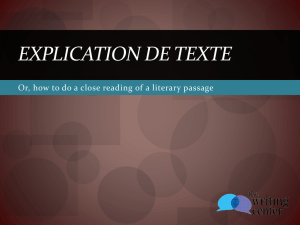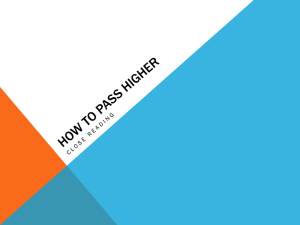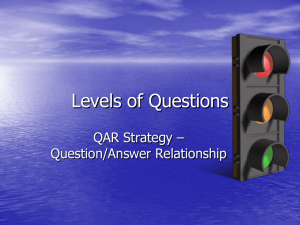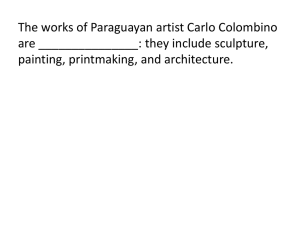MCAT Chaney`s Verbal Reasoning Mastery Lecture Notes #2
advertisement
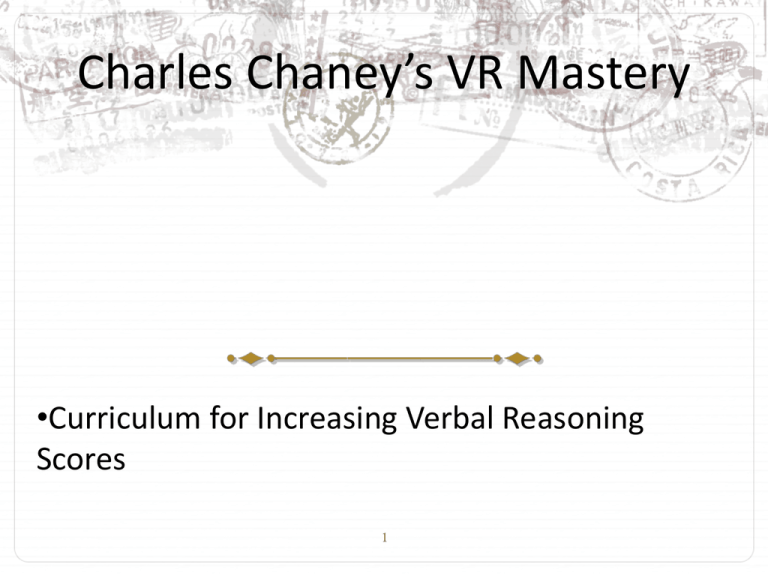
Charles Chaney’s VR Mastery •Curriculum for Increasing Verbal Reasoning Scores 1 Chaney’s VR Strategies • Verbal Reasoning Passage Types and Strategies. – The natural science passage. • The study of nature which involves the physical aspects of animals, the earth, and the universe beyond. • Subjects include mainly astronomy, biology, chemistry, and physics. • Don’t assume you’ll do well on this section because of your experience with science courses. – NSPs are challenging because they are usually lengthy and full of details. – Examinees tend to focus on details and lose track of main ideas. – Examinees expect questions that will test their recollection of facts. • Your mission is to understand the ideas and arguments of the passage. – Work on identifying conclusions and assumptions of each paragraph and remember them when answering the questions.. 2 Cheney’s VR Strategies – Reading strategies for the natural science passage. • Look for two or more theories. • Understand who and what supports each theory, especially the author’s stance. • Remember where each detail appears in the passage. • Form conclusions in your mind based on the facts. • Summarize the main idea of each paragraph as you read. • Identify two or more competing arguments or hypotheses. 3 Cheney’s VR Strategies – Question strategies for the natural science passage. • Test makers often ask for answers you’d least expect. • Natural science questions often ask about hypothetical opponents or supporters of various theories discussed in the passage. – Identify the main arguments and ask yourself which group would support one hypothesis over another. • Read answer choices A through D extremely carefully for each question, and eliminate wrong answers as you proceed. – Note extreme, unqualified words like always, never, not, and must. 4 Cheney’s VR Strategies – Question strategies for the natural science passage. • Test makers often ask for answers you’d least expect. • Natural science questions often ask about hypothetical opponents or supporters of various theories discussed in the passage. – Identify the main arguments and ask yourself which group would support one hypothesis over another. • Read answer choices A through D extremely carefully for each question, and eliminate wrong answers as you proceed. – Note extreme, unqualified words like always, never, not, and must. 5 Cheney’s VR Strategies • Be vigilant of all dates and time periods mentioned in the passage. • Pay attention to which arguments the author supports or rejects. – The author’s usually espouse a position on the topic. • Do not overanalyze natural science questions. • Eliminate wrong answers. – Look for obvious wrong answers and use the strikethrough to eliminate them. – Usually one or two answers are obviously false. – Obvious wrong answers are clearly opposite to what is stated in the passage. 6 Cheney’s VR Strategies – The Social Science passage. • Most of the passages come from journal articles and are very challenging. • The range of topics include sociology, anthropology, economics, psychology, political science, education and history. 7 Cheney’s VR Strategies – Reading strategies for the social science passage. • Be prepared to read about cultural or political movements, along with important dates, time periods and key arguments. • Some key strategies to employ with social science passages. – Look for comparisons made by the author. » Usually, these passages present two or more points or arguments. 8 Cheney’s VR Strategies – Reading strategies for the social science passage. • Pay attention to the argument supported by the author compared to others that he or she writes about. • Identify the assumptions of the author and look for any biases. • Identify any assumptions relevant to the arguments made by competing experts. • Consider what groups of people would support or reject various theories or ideas presented in the passage. • Read every sentence carefully. • Identify implied ideas woven into the passage. 9 Cheney’s VR Strategies – Question strategies for the social science passage. • Social science questions often ask about influences of certain political or social movements. • Social science questions often test your understanding of how certain views relate to statements from the passage. • Pay attention to the tone of the author and rarely is this tone extreme or strident. • Many social science questions ask about the intentions of the author. • Read the passage first, and then answer questions. • Read each answer choice A through D carefully and twice to make sure you understand each question completely. 10 Cheney’s VR Strategies – The Humanities passage. • Because pre-med students generally have poor exposure to subjects in the humanities, “bone up” on these topics by reading books and journals dealing with them. • The range of topics include art, language, literature, communication, religion and philosophy. • Be prepared for many details and facts including important dates, time periods, artistic or literary movements, cultural groups, etc. – Artistic, literary, and cultural movements are hot topics. 11 Cheney’s VR Strategies – The Humanities passage. • Reading strategies for the humanities passage. – Keep track of facts and dates, as well as key ideas. – Expect to read about people who criticize certain viewpoints. – Determine the strengths and weaknesses of arguments expressed by critics. – Be sure to understand how the opinions of the author compare to those of other experts mentioned in the passage. – Use Neuro-Visual Programming and do NOT speed-read. – Read for meaning and not just details. 12 Cheney’s VR Strategies – The Humanities passage. • Question strategies for the humanities passage. – Many questions test your direct understanding of the various viewpoints found in the passage, so you should eliminate answers that are in opposition to the correct answer, and you should look for answers that express some other viewpoint than that found in the passage. – Some questions ask about how the author would respond to a concept in the passage. – Try to answer the question before reading the answer choices because answer choices are tricky and misleading. – For each point that the author makes, determine why the author is making that point. – Look for assumptions upon which the conclusion is based because the correct assumption is one that must be true in order for the conclusion to stand, and you want to select the answer that MUST be true, not may or partly be true. 13




